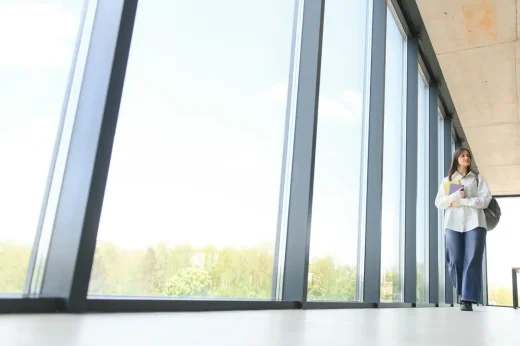Effective office refurbishment projects factors, Workplace renewal, Commercial property refurb advice
Essential Factors for Effective Office Refurbishment Projects
12 November 2024
A well-planned refurbishment can significantly impact productivity, employee well-being, and the functional utility of the workspace. A thoughtful approach to office refurbishment considers everything from layout optimisation and ergonomic design to sustainability and branding. In Glasgow, as more companies aim to create spaces that meet both operational needs and the comfort of employees, understanding the essential elements of a successful refurbishment project is crucial.
An effective refurbishment project goes beyond fresh paint and new furniture. It’s about reimagining how space is used, ensuring that it aligns with the evolving needs of the workforce, and creating an environment that enhances both individual focus and team collaboration. Here, we outline the core factors that contribute to the success of any office refurbishment initiative.
Space Planning and Layout Optimisation
One of the most critical aspects of office refurbishment is effective space planning. A well-organised layout should accommodate a variety of work styles and activities, from focused individual tasks to dynamic group collaborations. Achieving the right balance of open areas and private spaces allows for a workflow that feels both efficient and flexible. Open-plan layouts are popular, yet they often require dedicated areas for privacy or quiet work to ensure employees aren’t distracted.
In office fit out Glasgow projects, having a reliable team that understands the local needs can make a substantial difference. With tailored solutions, businesses can achieve flexible workspaces that meet diverse needs, including breakout areas, hot-desking options, and collaborative zones. Each of these options enables employees to choose spaces that best suit their tasks, whether they need a quiet spot for concentration or a collaborative setting for brainstorming. Careful planning ensures that no space goes unused and that each area contributes to a cohesive and productive environment..
Prioritising Ergonomics and Comfort
The physical comfort of employees has a direct impact on productivity and job satisfaction, making ergonomic design a key focus in any office refurbishment. Ergonomic furniture, including adjustable desks, supportive seating, and monitor stands, allows employees to work comfortably over extended periods. Prioritising ergonomics reduces physical strain, minimising issues like fatigue and musculoskeletal problems.
Beyond furniture, ergonomic considerations extend to layout. Placing frequently used items within easy reach, ensuring proper lighting, and arranging workstations to prevent glare or discomfort are practical adjustments that contribute to a healthier workspace. With employee well-being at the forefront of modern design, ergonomics is no longer an optional consideration but a necessary one for forward-thinking companies.
Sustainable and Eco-Friendly Choices
Sustainability is increasingly prioritised in office refurbishment projects. Businesses are recognising the benefits of eco-friendly design, not only as a means of reducing environmental impact but also as a strategy for operational efficiency. Incorporating energy-efficient lighting, using recycled materials, and choosing low-emission paints are all practical steps toward a greener workspace.
Implementing sustainable choices can also lead to long-term cost savings. LED lighting, for example, uses significantly less energy than traditional lighting options, and high-quality, eco-friendly materials tend to be more durable, reducing the need for frequent replacements. As businesses aim to align with modern values, creating a space that reflects a commitment to sustainability also contributes to a positive brand image.
Branding and Workplace Aesthetics
The aesthetics of an office space communicate a great deal about a company’s culture and values. Through the concept of branded environments, businesses can create spaces that reflect their identity and resonate with both employees and clients. Elements like colour schemes, wall art, signage, and custom fixtures can reinforce branding while creating an engaging and welcoming environment.
Branded aesthetics are more than decorative choices—they create a unified look that instils pride in employees and a strong impression for visitors. For example, a company that values innovation might opt for a sleek, minimalist design with bold accent colours, while a firm focused on sustainability may incorporate natural materials and eco-conscious design elements. Ultimately, integrating branding into workplace design fosters a cohesive space that reinforces corporate identity.
Key Design Elements – Lighting, Acoustics, and Technology
A functional and comfortable office space depends on more than just furniture and layout. Key design elements like lighting, acoustics, and technology play a significant role in creating an environment where employees can thrive.
Lighting Solutions: Lighting can profoundly influence mood and productivity. Natural light is ideal, as it boosts mood and reduces eye strain, but where natural light is limited, energy-efficient LED lighting can provide similar benefits. Adjustable lighting options allow employees to control brightness levels according to their tasks, creating a more comfortable working environment.
Acoustic Management: Noise can be a major distraction, particularly in open-plan offices. Acoustic solutions, such as sound-absorbing panels, carpets, and acoustic partitions, help to manage noise levels and create quieter spaces where employees can focus. Thoughtful acoustic design enables a productive atmosphere without compromising the collaborative potential of an open space.
Integrated Technology: Modern workspaces require up-to-date technology solutions that streamline workflows and support flexibility. Wireless charging stations, built-in video conferencing tools, and high-speed internet access are increasingly standard in refurbished offices. Technology that supports hybrid work models and collaboration enhances productivity and ensures the space meets current demands.
Commercial Property Refurbishment Conclusion
Office refurbishment offers a powerful opportunity to enhance both functionality and aesthetics in a workplace. By addressing factors like layout, ergonomics, sustainability, branding, and essential design elements, businesses can create environments that support productivity and reflect their values.
With clear goals and expert project management, an office refurbishment transforms not only the look of a workspace but also the experience it offers to everyone who uses it.
Comments on this guide to Effective office refurbishment projects factors article are welcome.
Property Designs
Glasgow Architecture Designs – architectural selection below:
50 Bothwell Street Office Redevelopment
Cameron House Loch Lomond Resort
Comments / photos for the Effective office refurbishment projects factors page welcome.





